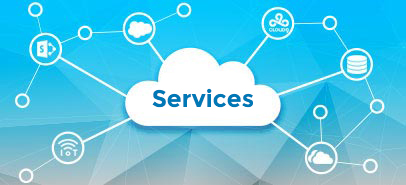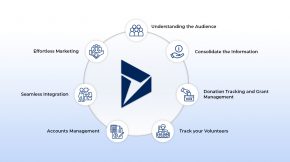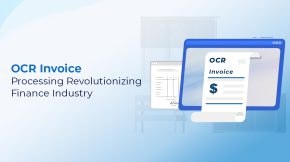Dynamics 365 Business Central Implementation
Microsoft Dynamics 365 Business Central can help streamline processes and make things run more efficiently for any business. This guide lays out a straightforward plan for a successful Business Central implementation, covering everything from planning to ongoing support after it’s up and running.
Whether you’re a small business looking to simplify operations or a larger company trying to bring different systems together, this guide has you covered.
The 3 ERP Traps That Hurt Growth (And How to Spot Them)
Trap 1: Data Silos That Block Decisions
What Happens:
- Sales uses one system. Inventory uses another. Production tracks things in Excel.
- Your team spends hours trying to make sense of conflicting reports.
The Real Impact:
- A $2M order gets canceled because inventory numbers were wrong.
- Sales deals are delayed because approvals take too long.
Why It Happens:
- Older systems weren’t built to share data in real time.
- Quick-fix integrations break all the time.
Trap 2: Manual Workflows That Waste Time
What Happens:
- Your finance team spends weeks closing the books every month.
- Supply chain managers adjust inventory manually, leading to stockouts during busy times.
The Real Impact:
- Top employees quit because they’re stuck doing repetitive work.
- New hires take months just to understand your processes.
Why It Happens:
- Your ERP requires expensive consultants to make small updates.
- IT stops automation projects, worried about compliance issues.
Trap 3: Security Gaps That Cost You Big
What Happens:
- A phishing attack hits your ERP, leaking customer payment data.
- You spend $850K on recovery, and your brand takes a hit.
The Real Impact:
- Your ERP has hundreds of unpatched vulnerabilities.
- There aren’t enough controls to manage who sees sensitive data.
How to Move Forward
You don’t need to settle for a system that holds you back. Start by spotting these traps in your own ERP. And if you’re unsure where to start, a quick benchmarking exercise can help.
Microsoft Business Central Implementation: A Simple Fix for Big Problems
Fix 1: Financial Control Without Stress
The Problem: Your team uses too many spreadsheets to manage budgets. Last quarter, a single formula error caused a $1.2M overspend.
How Dynamics 365 Business Central Implementation Helps:
- Automatic Currency Conversion: Transactions in EUR, JPY, or GBP update with live exchange rates. No more late-night calls to the treasury team.
- Budget Limits That Stick: Set spending caps for each department, like marketing or operations. The system blocks unapproved purchases.
- Detailed Audit Trails: Track every change. When it’s time for an audit, you can find what you need in seconds.
The Result: Closing the books takes 2 days instead of 18.
Fix 2: A Smarter Supply Chain
The Problem: A supplier misses a key delivery, and your production shuts down for three days. You find out too late to fix it.
How Dynamics 365 Business Central Implementation Helps:
- Real-Time Alerts: The system warns you when a supplier’s on-time delivery rate falls below 95%.
- Smarter Inventory Management: Reorder points adjust automatically based on seasonal demand or market trends.
- Barcode Scanning Made Easy: Warehouse staff only scan items once. Data updates everywhere—sales, accounting, and procurement.
The Result: Inventory costs drop by 22%, and your order accuracy improves to 99.6%.
Claim Your Free Cloud Infrastructure Evaluation to future-proof your implementation.
Fix 3: Better Production Efficiency
The Problem: Your plant runs at 68% capacity. You don’t know why, and you don’t know where to start.
How Dynamics 365 Business Central Implementation Helps:
- Live Machine Tracking: Sensors track downtime and show you that Line B is idle 35% of the time because of calibration issues.
- Automatic Rescheduling: If raw materials arrive late, the system shifts production to machines with availability. No overtime needed.
- Profit Insights Per Product: Find out your “best seller” is actually losing $4.20 per unit.
The Result: Production output increases by 19% without hiring new staff.
Why Business Central Works
It’s not just another ERP system. Here’s why it’s different:
- Easy to Learn: It works inside Outlook and Teams. Your team won’t need to learn new tools.
- Flexible: Keep your current CRM and HR tools. Business Central integrates with them.
- Reliable Updates: Microsoft takes care of updates. Nothing breaks, and your workflows stay the same.
Here is your dynamics 365 business central user guide to know more.
The Two Biggest ERP Mistakes
1. Choosing Cheap Over Smart: Free ERPs look good at first. But when custom code breaks, you’ll spend millions fixing it.
2. Skipping Change Management: If the system doesn’t match how your team works, they won’t use it. Forcing a system without preparation leads to failure.
Microsoft Business Central won’t solve everything overnight. But it fixes what’s broken, and it won’t get in your team’s way.
Explore Industry-Specific Configurations for your business.
The Implementation Timeline: What to Expect
Search Intent: “How long does Business Central take to implement?”
Your reality: You’re managing quarterly targets, team workloads, and stakeholder expectations. The last thing you need is a never-ending ERP project draining resources.
Here’s how it actually works:
Phase 1: Planning (2 to 4 Weeks)
Goal: Map your current processes to Business Central.
Your Role: Share pain points. For example, “Our Sage 50 system can’t handle multi-entity consolidations.”
Outcome: A clear plan that matches Business Central’s modules (like Financials and Supply Chain) to your workflows.
Phase 2: Customization (4 to 8 Weeks)
Goal: Build a system that fits your needs, not a “one-size-fits-all” solution.
Examples:
- AI-Powered Sales Quotes: Automate pricing based on past customer orders and real-time margins.
- CFO Dashboards: Pull AR aging, cash flow, and budget comparisons into Power BI.
Outcome: A system that reflects how your business works—not generic templates.
Phase 3: Testing (3 to 6 Weeks)
Goal: Find and fix issues before they impact your operations.
Scenarios to Test:
- Warehouse Teams: Simulate peak season bin transfers.
- Finance Teams: Process 500+ invoices in multiple currencies in one day.
Outcome: A system that’s 98% issue-free.
Phase 4: Go-Live (1 Week)
Goal: Launch without disruptions.
How It’s Done:
- Migrate data in phases (like customers, then orders, then inventory).
- Keep legacy systems accessible in read-only mode during the transition.
Outcome: Teams switch smoothly, with no missed shipments or payroll errors.
Critical Milestone: A Go-Live Readiness Workshop 14 days before launch to catch last-minute issues like:
- Outdated vendor bank details that cause payment delays.
- Super-users in procurement who aren’t fully trained, leading to bottlenecks.
Pro Tip: Schedule Ongoing Support to sustain ROI.
Preparing for Success: Before You Go Live
Search Intent: “How to prepare for Business Central go-live?”
Step 1: Clean Your Data
What to Fix:
- Merge duplicate entries like “Vendor Inc” and “Vendor Inc.” to avoid duplicate purchase orders.
- Ensure SKU details (like weight and dimensions) are correct for accurate shipping costs.
Tools Used:
- A Data Migration Assessment tool flags missing or incomplete fields, like customer credit limits.
Step 2: Train Your Team
Finance Teams:
- Learn how to process multi-currency invoices, apply exchange rates, and reconcile payments.
Warehouse Staff:
- Practice barcode scanning for receiving goods, updating bin locations, and processing orders.
IT Teams:
- Troubleshoot common issues, like integration errors with older tools.
Step 3: Secure Your System
Access Controls:
- Restrict HR managers to employee records. Limit warehouse staff to inventory modules.
- Set up audit trails for sensitive actions, like changes to vendor bank details.
What to Avoid: Skipping mock migrations can cause major issues, like incorrect inventory imports that delay shipments.
Post-Go-Live: Long-Term Support
“Once done, will Dynamics 365 Business Central implementation scale with my growth?”
Short answer- Yes.
Ongoing Support
- Monthly Optimization: Use Power BI to track KPIs like order fulfillment time or inventory turnover. Adjust workflows if numbers drop.
- Compliance Updates: Azure-based patches automatically update tax rules (e.g., IRS 1099 thresholds or EU VAT changes).
Scalability
- Add modules as your needs grow. For example, use Project Management for job costing or CRM tools for lead tracking.
- Scale up without starting over.
ROI Over Time
- Short-Term (0 to 6 Months): Reduce manual processes, like cutting AP processing time by 50%.
- Long-Term (6 to 12 Months): Lower inventory costs by 30% using AI-driven demand forecasting.
Conclusion
Dynamics 365 Business Central implementation works best when paired with a partner who helps you grow. Beyond Key ensures your ERP adapts to changes in regulations, market demands, and daily operations.
From identifying workflow issues during planning to fine-tuning AI forecasts after launch, we focus on turning ERP potential into real results.
Next Step: Claim your free cloud infrastructure evaluation to prepare for a smooth implementation.












